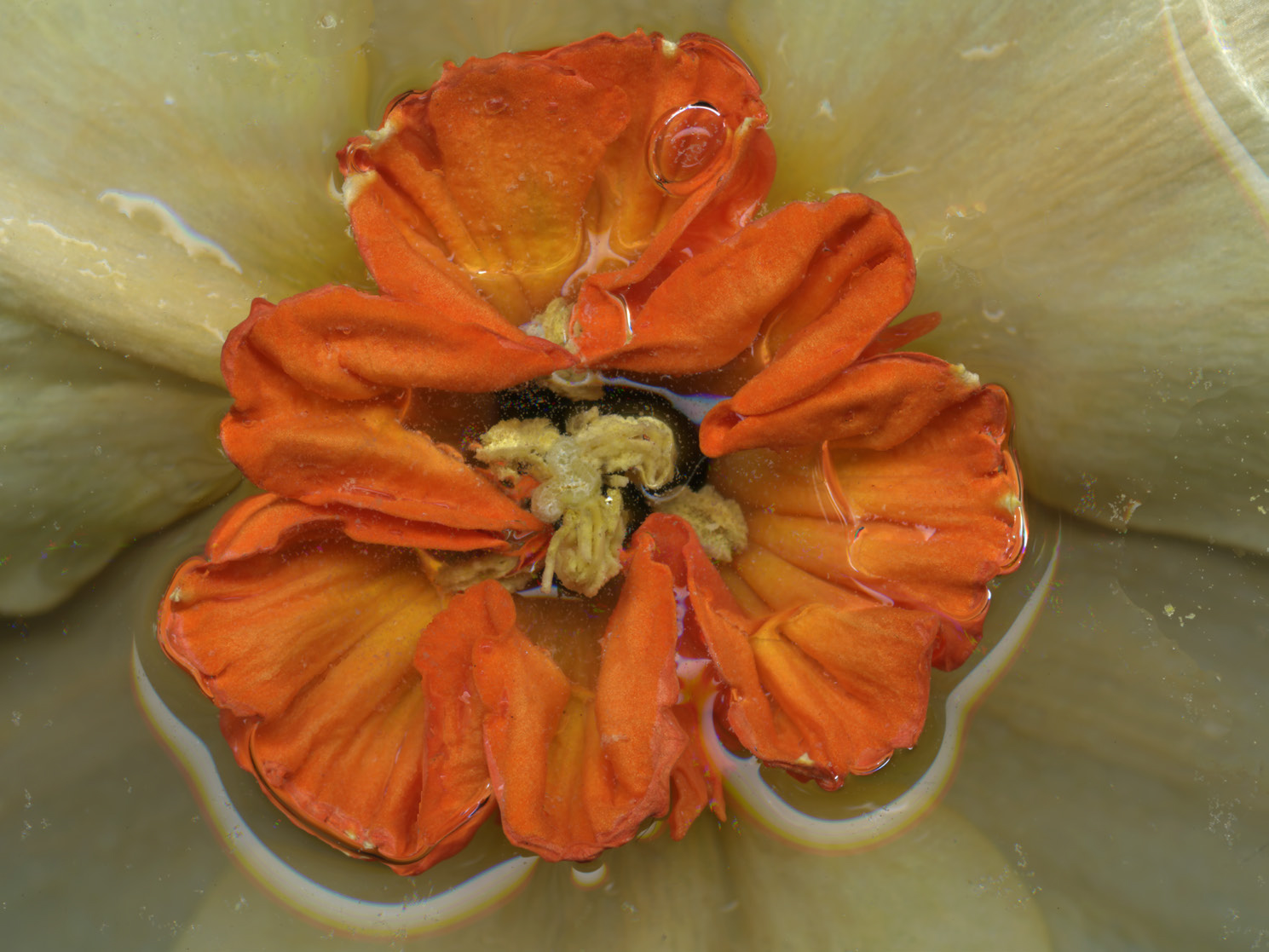The Man with the Midas Touch
A BOTANICAL INDEX OF NARCISSUS
SCANNING FLOWERS BY ELINORE DARZI
“NOW I SHALL SPEAK OF THE SADNESS OF FLOWERS SO AS TO FEEL MORE OF THE ORDER OF WHATEVER EXISTED.”
The work The Man With The Midas Touch - A Botanical Index of Narcissus, depicts 30 types of gold medal winning Narcissus flowers from the Chelsea Flower Show in 2016. The series is composed of scans of each flower, using a technique the artist has developed, where she uses multiple kinds of liquids such as milk and water when placing the ower on a digital scanner. This technique might at first seem surprising: while at once using the qualities of high definition scanning, using liquid is a hint to a return to old methods of photographing and print making. This is the rest of two contradicting moments in this series: while Skladmann is photographing the mystified flower of Narcissus, in scanning it she de-mystifies the originary mythological scene. In her installation, looking at the flowers does not bring a mirror image of the human: it is not the reflection of the subject - the image of the flower is set still. Looking back at the viewer, it is thus raising the question of the representation of the beauty of nature and its place in current times.
This is the first series of work where Skladmann replaces her camera with the solid apparatus of the scanner. This shift has several consequences, most importantly that in this act both the object and the photographing machine are still, and the subjective human qualities of the photographer are set aside: there is no need of light, focus adjustments nor studio conditions. In order to take a high definition image the scanner’s eye is moving throughout the object on the glass while illuminating it, with one perspective. As Skladmann claims, the pre- programmed light of the scanner offers the gift of praising the bottom-up approach of seeing something close-up. In disregarding any intermediaries of the human the artist permits the reenactment of a moment that seems to have passed in contemporary culture, taking a long moment to truly look, to observe in full detail. The slow movement of the scanner brings the machine to the creation of the meticulous digital photograph, permitting close up encounter with nature.
Tackling the scanner implies two issues important to understanding the political consequences of the technique, along and against the creation of the work of art. Firstly, the close up perspective the scanner permits emphasises its purpose: the scanned object is the object per se - just detailed inscriptions, like the clear view appearing in a magnifying glass. Nothing separates the light from the object besides the mere article in suspect. This is therefore a proof of the idea behind this invention, which was primarily built to serve military purposes. Each ‘evidence’ is physically put, the objected touched, placed on the surface in order to see is more clearly, to investigate it.
Another important element is taken from the history of photography, from the pioneer inventors of the scanning technique, Henry Fox Talbot and Anna Atkins. Thinking ahead of the electronic machine, in 1835 Fox Talbot examined a process where he wet a sheet of paper with liquid composed of table salt, while the other side of the paper is brushed with silver nitrate. As the chemicals on the paper are light sensitive, they are darkened when exposed for a period of up an hour or more. Following correspondences with Fox Talbot, the botanist Anna Atkins took his invention further in order to illustrate her professional essais. She placed the object of her research, British algae, directly on the paper, producing prints multiple times and continuously as the plants perished. In so doing, Atkins presented what will forever be missing in the photograph - time and change. One of the things that the practice of Fox Talbot and Atkins stressed the most are the fact that photography is not only depicting nature but a result of nature, based on the power of the sun light. This seems to have in uenced Skladmann’s scan, making a critical statement by choosing to scan flowers...
Essay by Elinore Darzi- Download PDF
Poems by Joshua Leon - Download PDF





























